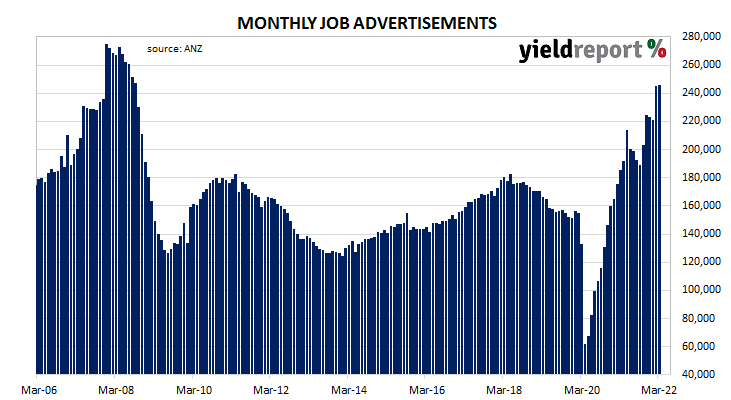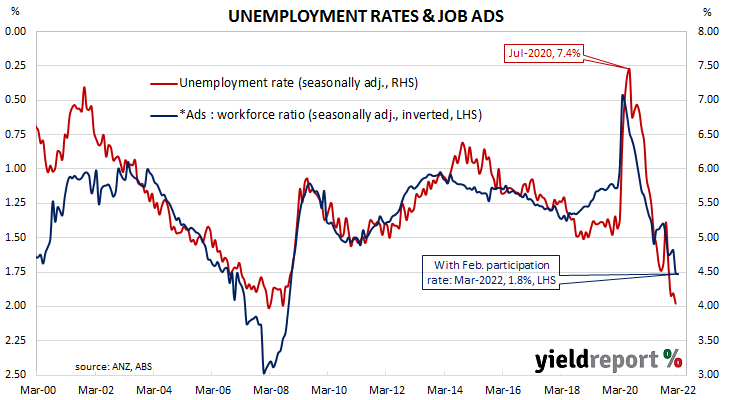Summary: Job ads up 0.4% in March; 32.5% higher than same month in 2021; labour demand “elevated”, continues to grow; ads-to-workforce ratio at 1.8%.
From mid-2017 onwards, year-on-year growth rates in the total number of Australian job advertisements consistently exceeded 10%. That was until mid-2018 when the annual growth rate fell back markedly. 2019 was notable for its reduced employment advertising and this trend continued into the first quarter of 2020. Advertising plunged in April and May of 2020 as pandemic restrictions took effect but then recovered quite quickly.
According to the latest ANZ figures, total advertisements increased by 0.4% in March on a seasonally-adjusted basis. The rise followed a 10.9% jump in February and a 1.1% decline in January after revisions. On a 12-month basis, total job advertisements were 32.5% higher than in March 2021, down from February’s revised figure of 39.6%.
“Labour demand is elevated and continuing to grow, confirmed by ABS job vacancies data which showed a rise of 6.9% quarter-on-quarter in February to a new record high,” said ANZ senior economist Catherine Birch.
The figures were released at roughly the same time as the Melbourne Institute’s latest Inflation Gauge reading but Commonwealth Government bond yields hardly moved on the day. By the close of business, 3-year and 10-year ACGB yields were both unchanged at 2.60% and 2.89% respectively while the 20-year yield finished 1bp lower at 3.19%.
In the cash futures market, expectations of any material change in the actual cash rate, currently at 0.06%, softened a touch. At the end of the day, contract prices implied the cash rate would not exceed the RBA’s 0.10% target rate until May and then rise to 0.75% by August. February 2023 contracts implied a cash rate of 1.945%.
The inverse relationship between job advertisements and the unemployment rate has been quite strong (see below chart), although ANZ themselves called the relationship between the two series into question in early 2019. A rising number of job advertisements as a proportion of the labour force is suggestive of lower unemployment rates in the near-future while a falling ratio suggests higher unemployment rates will follow.
In 2008/2009, advertisements plummeted and Australia’s unemployment rate jumped from 4% to nearly 6% over a period of 15 months. When a more dramatic fall in advertisements took place in April 2020, the unemployment rate responded much more quickly.



